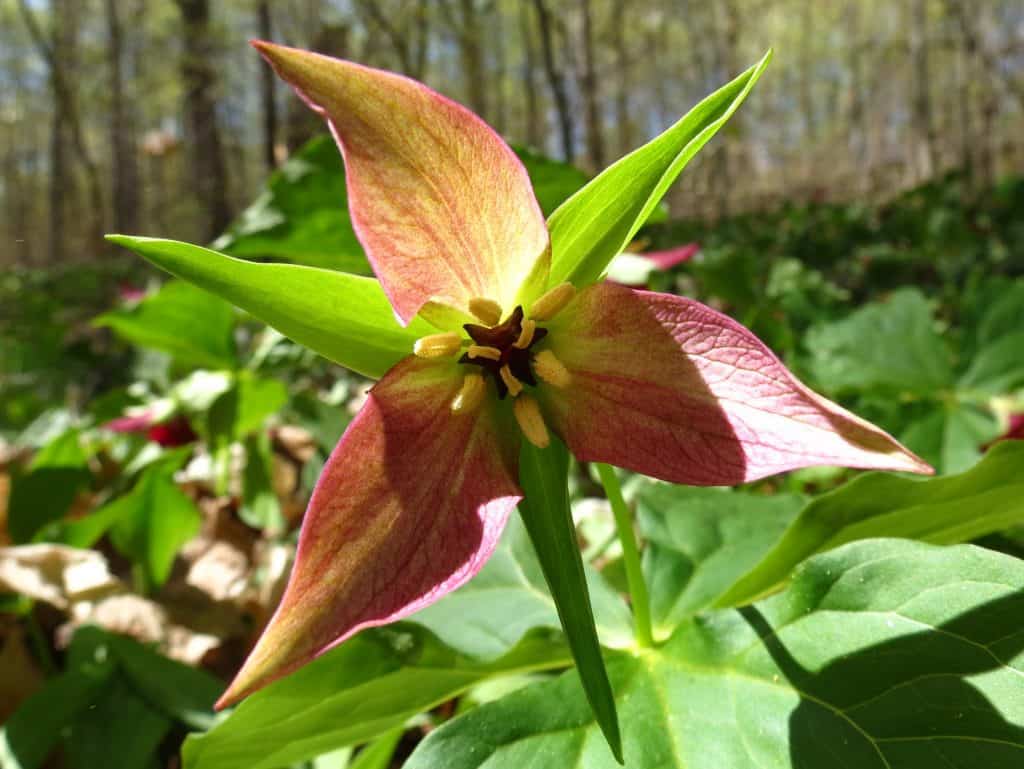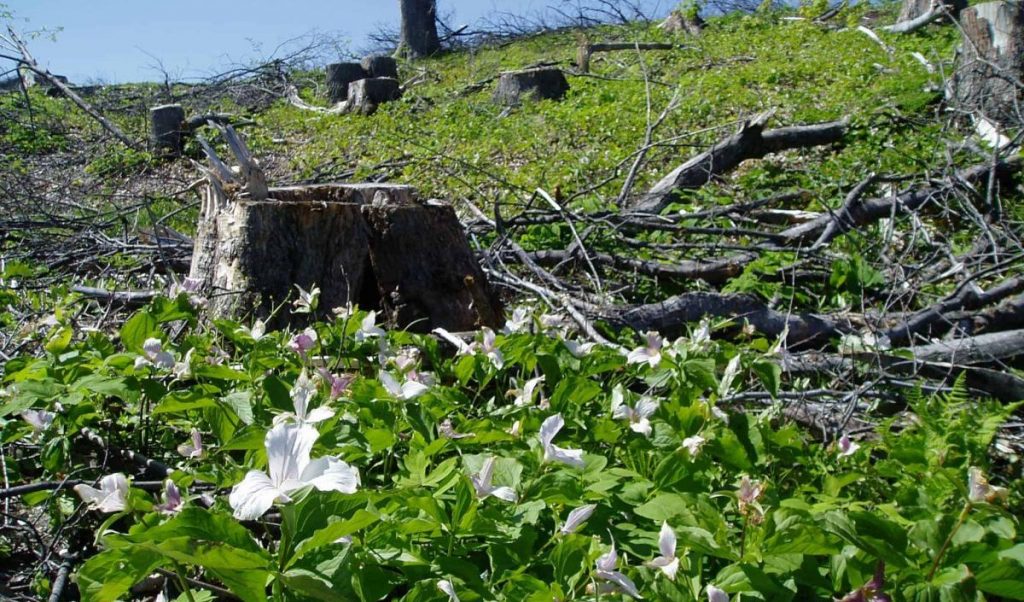Talking with Carson, it is clear there is no trillium he would not like. “They’re a beautiful wildflower,” he says. But his focus, and the main reason for his acclaim, are elusive, rare mutations in Trillium grandiflorum — Ontario’s familiar provincial emblem, and one of five trillium species in the province. Those mutations produce double trilliums, once described by the renowned American botanist Mary Gibson Henry as the “Holy Grail” of North American wildflowers. “It’s a mutation in which all the reproductive parts are modified to petals,” Carson explains. Instead of the three-petal flower Ontarians know, the mutated trillium has a cluster that makes it look like a little gardenia.

Double take: A couple of “classic” double trilliums spotted and photographed by trillium hunter Brian Carson, near Kaladar, Ont.
Since then, Carson has found numerous other double trilliums in various locations. “They’re turning up regularly now, perhaps because of where I’m looking and my dedication — or it could just be that nobody’s looking elsewhere.” He laughs, but Carson is known as “the trillium guy” for good reason. He can lay claim to having found and reported more new double trilliums than anyone in North America. Aside from the “doubles,” his finds also include mutations with anywhere from zero to five petals, and hundreds of colour variants of another, traditionally red trillium species, Trillium erectum.
Sharing finds — whether by exchanging plants and seeds or by telling stories and showing photographs to local audiences — is “kind of his mission,” says Anne Harbord, a director at the Ontario Horticultural Association who met Carson in 2007 and successfully nominated him for the association’s Award of Merit in 2018. “He loves to joke. When he does a presentation, you’re laughing along with him, and he’ll tell all the little side stories about things that happened to him while he was out plant-hunting.” Those stories include serendipitous finds while stopping to rest, park a bike or take a “nature break”; encounters with bears and foxes; and near collisions after sudden stops to get a closer look at roadside flowers (hence the bumper sticker).

Carson also finds rare colour variants, like this pink variant of a “red” trillium

A white double with pink accents found near Renfrew, Ont.
For the same reason, while he encourages people who attend his talks to go out in the spring and look “down at their feet” as well as looking up at the birds, he rarely reveals the specific locations of his finds. “I kind of feel a responsibility now to find them before the bulldozers do,” says Carson. “Otherwise, they’re lost.”

A year after Carson found his first double trillium, he returned to the same woodland—“the most beautiful Trillium woods that I have had the privilege of tip-toeing through”—only to find the entire stand of second-growth maple and beech “reduced to a graveyard of stumps”

I live on the Bruce Peninsula in Ontario and wanted Brian Carson to know about a patch of nodding trilliums we have up here. He can contact me through my email which I give you permission to share with him.